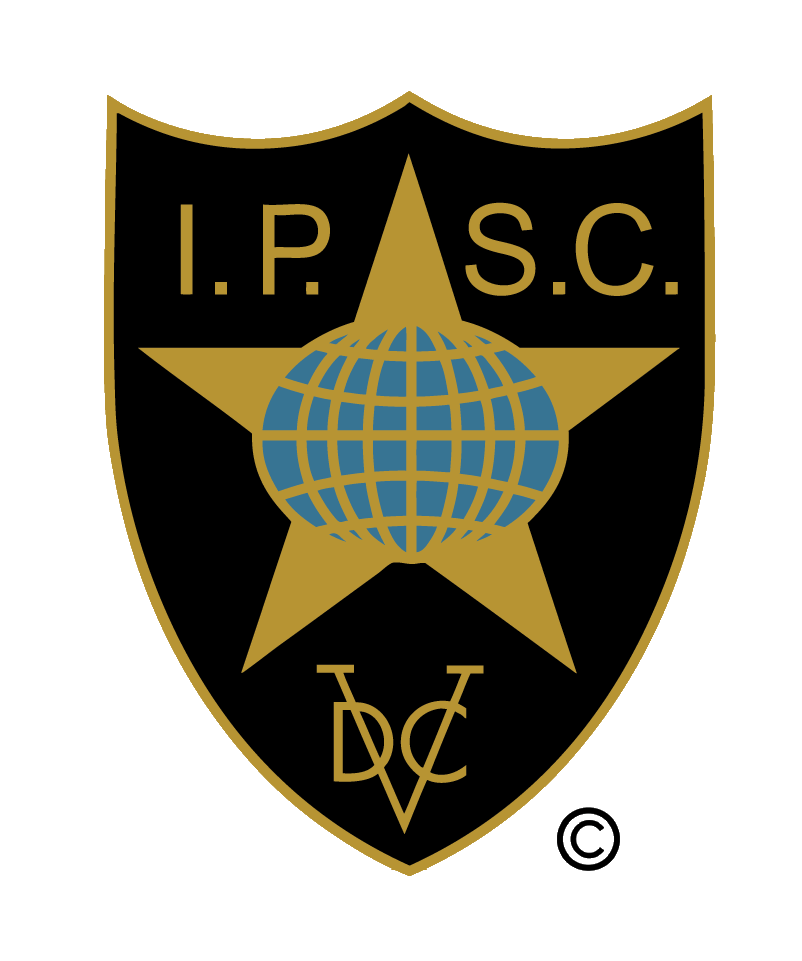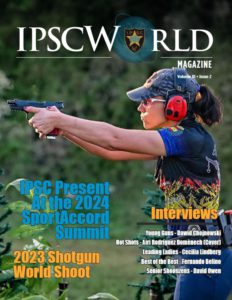SAFETY AND ORIENTATION
GETTING STARTED
Introduction
Welcome to the exciting world of IPSC shooting. This guide is used to provide participants with the basic skills necessary to participate in IPSC competitions and to teach a combination of safety, proficiency and understanding of the rules.
- The progression of skills will be learned by:
- Reading the materials that are provided with the course.
- Observing techniques demonstrated by the instructor.
- Applying the techniques under the supervision of the instructor.
Knowing what is safe is not enough. Without instruction and supervision, the students may not realize some things might not be safe. The instructor will catch this action at the earliest stage and create the appropriate responses for the student. Safe actions then become reflexive.
Both new and experienced target competitors are welcome. This guide will demonstrate all of the necessary skills to shoot any IPSC course of fire safely.
Upon completion of the course, students will be safe and sufficiently proficient to allow them to compete subject to the requirements of the particular Region.
There are shooting exercises that the students must complete to qualify. Some have both a time and accuracy requirement, while some involve only accuracy. The students should know that they are to keep trying until they successfully complete a requirements. If the instructor has doubts about safety or attitude the student will not qualify.
Safety and Responsibility
To get a start in IPSC shooting all that is required is a reliable firearm, eye and ear protection and a large dose of enthusiasm.
Hearing and Eye Protection – Competitors and spectators must wear hearing and eye protection at all times when they are attending IPSC competitions. Everyone, not just officials, needs to be alert to remind anyone that they must have hearing and eye protection on before shooting begins.
Safety Areas
Designated Safety Areas must be used for the casing and uncasing of your firearm. Under no circumstance may ammunition may be handled in the Safety Area. This area is provided so athletes may check their firearm without being supervised by a Range Officer. There will be a designated safe direction in which to point the muzzle of your firearm at all times. You are also allowed to practice dry firing, reloads (as long as no ammunition is handled), and other activities such as repairs, cleaning, and maintenance.
Casing/Uncasing
Casing and uncasing a firearm is when a competitor wants to place in, or retrieve from, a firearm in a carry case, gun bag, etc. This can only be done in a designated Safety Area or under the direct supervision of a Range Officer. The firearm is placed in a carry case, all the while making sure that the firearm is pointed in the designated safe direction. It is always recommended that the competitor confirm the firearm is unloaded.
Basic Firearm Safety Rules
- All firearms are always considered to be loaded.
- The muzzle must always be pointed down range and in a safe direction. Never allow the muzzle to cover anything you are not willing to shoot.
- Keep your finger off the trigger and out of the trigger guard except when actually shooting at targets.
- Be sure of where the bullet is going to end up.
In addition to the four basic safety rules there are further rules for safety. These procedural safety rules involve safe gun-handling and common sense:
- Once holstered or cased, firearms may not, under any circumstances, be handled in any fashion outside the Safety Area without the express authorization of a Range Officer.
- The uncasing and casing of the firearm must always take place at the Safety Area.
- The handling of ammunition in any Safety Area is strictly prohibited.
- Eye and ear protection must be worn at all times while on the range whether shooting or not.
Range Officials
The National Range Officers Institute (NROI) is designed to establish a structure for the creation, accreditation, recognition and maintenance for the members wishing to become match officials.
The organization ensures that Range Officers are the best prepared and trained, to a same world-wide standard.
The primary responsibility of Range Officials is the safety of the competitors, spectators and fellow Range Officials. The Officials at an IPSC event are in total control of the range.
Stats Officer (SO) – The stats officer is responsible to collect, sort, verify, tabulate and retain all score sheets and ultimately produces provisional and final results.
Range Officer (RO) – A Range Officer will explain the course of fire to all competitors and ensure any questions are answered. They will issue range commands, oversee competitor compliance with the stage briefing and closely monitor safe competitor action. They will also declare the time, scores and penalties achieved by each competitor and verify that these are correctly recorded on the competitor’s score sheet.
Chief Range Officer (CRO) – A Chief Range Officer has primary authority over all Range Officers, individuals and activities in the Area under their control. They oversee the fair, correct and consistent application of the rules.
Range Master (RM) – A Range Master has overall authority over all Officials, persons and activities in the entire range. This includes range safety, the operation of all stages and the application of the rules.
Match Director (MD) – The Match Director handles overall match administration including squadding, scheduling, range construction, the coordination of all support staff and the provision of services. His authority and decisions will prevail with regard to all matters except in respect to the rules which is the domain of the Range Master.
Safety shall always be the primary goal, with efficiency and speed of the competition as secondary factors.
DVC
The motto Diligentia, Vis, Celeritas (DVC) stands for accuracy, power and speed. It is the balance of all three elements that will make you successful.
It is good to be accurate but not if you are too slow and you do not have enough power. It is good to be fast and powerful but only if you hit the target. No one skill is valued more then the other, a balance of the three is needed.
Diligentia (accuracy) is dealt with by assigning scoring values which gives a premium for center hits and lesser values for peripheral hits. Points are deducted for misses.
Vis (power) is handled by setting major and minor power levels and penalizing minor calibres by giving them lower scores for peripheral hits than those given to major calibres. The minimum calibre in competitions is 9mm.
Celeritas (speed) is measured by timing each competitor or by fixing the time required for a particular challenge.

